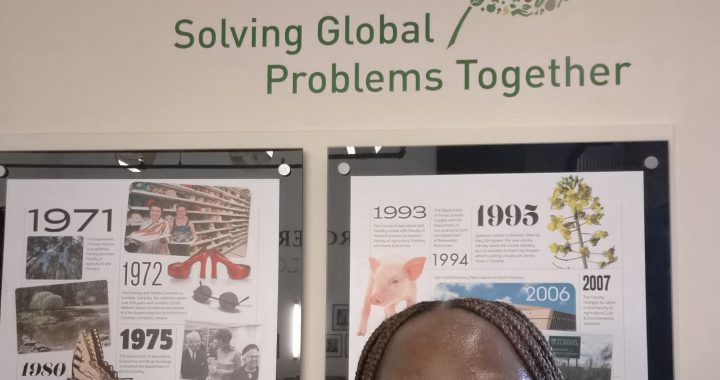Dr. Graham Plastow (Former Livestock Gentec CEO) attended the final meeting of the EuroFAANG project (https://eurofaang.eu/) at EMBL- European Bioinformatics Institute (EBI) in the UK in November. The meeting was organized by Emily Clark, Genome Analysis Team Leader at EBI. This was a great opportunity to continue networking with European researchers working on livestock genomics including members of the BovReg project (https://bovreg.eu/) such as Emily (see photo). BovReg incorporated detailed analysis of the Kinsella composite population at the UofA.

EuroFAANG was a Research Infrastructure Project, funded by the EU in 2023 as a natural outgrowth of the EuroFAANG collaborative effort that had seen 6 European projects come together since 2020 to bridge the gap between genomics and phenomics at the European level. The theme of the conference was “How can research infrastructures strengthen animal science in Europe and beyond?”. Gentec, a founder member of the Functional Analysis of Animal Genomes initiative (https://www.faang.org/) continues to participate in these important efforts to provide input on priorities and to also benefit from the latest developments and help refine the tools we make available for Canadian livestock producers.
Key presentations reviewed state of the art efforts on phenotyping (Practical phenotyping/tools & data management; sector perspective, Lars Peter Sørensen (VikingGenetics)) genome editing (Outcomes from the EuroFAANG Think-Tank on Genome Editing, Geena Cartick, (European Forum for Farm Animal Breeders (https://www.effab.info/) and Surrogate sires: genome editing for biobanking Mike McGrew (U. Edinburgh). Natalie Twine (CSIRO) presented some of the latest tools developed for genome analysis of quantitative traits (Scaling genomics for population-level precision health). A team from UC Dublin reviewed the application of genomics to animal disease issues (Machine learning to understand bovine tuberculosis, John O’Grady, and a discussion on future efforts led by David MacHugh).
Finally Emily and the team set out the vision for the next initiative in this area called “GenoPHEnix”. This proposal to the ESFRI Road Map builds on the previous efforts of the EuroFAANG, PigWeb, AquaExcel3.0 and SmartCow projects to provide a consolidated research infrastructure for the science needed to meet future challenges to the Agri-Food sector. The proposal has the following aims:
- To sustainably produce and manage healthier farmed animals, with the highest welfare standards.
- To more accurately exploit animal variability through enhanced phenotyping and genotyping capacity.
- To contribute to the 3Rs (reduction, refinement, replacement) in animal research by providing suitable models for deep phenotyping in vitro as well as in vivo.
- To advance the analysis of genome function, combined with the collection of deep phenotypes and multiomics information at cell, tissue, animal and on-farm/population level resolution.
We wish them success and look forward to continuing to participate in these areas especially as Canada is now an associated member of Horizon Europe, the EU’s research Framework Programme. This enables Canadian researchers to apply for most Pillar 2 projects under the same conditions as their European counterparts.









 I was fortunate to have one-on-one interactions with team leaders such as Ton Mallens, Database Manager at Hendrix Genetics. A key lesson from our meeting was the importance of rigorous data validation and regular checks of farm tools and equipment, such as scales, feeders, and software systems, to ensure accuracy in phenotypic and genotypic records. Beyond that, I gained valuable insights into Hypor breeding goals and the relevance of trait selection in ensuring animal welfare, productivity, and health through discussions with Abe Huisman, Director of Product Excellence, and Manuel Revilla, Animal Geneticist.
I was fortunate to have one-on-one interactions with team leaders such as Ton Mallens, Database Manager at Hendrix Genetics. A key lesson from our meeting was the importance of rigorous data validation and regular checks of farm tools and equipment, such as scales, feeders, and software systems, to ensure accuracy in phenotypic and genotypic records. Beyond that, I gained valuable insights into Hypor breeding goals and the relevance of trait selection in ensuring animal welfare, productivity, and health through discussions with Abe Huisman, Director of Product Excellence, and Manuel Revilla, Animal Geneticist.













